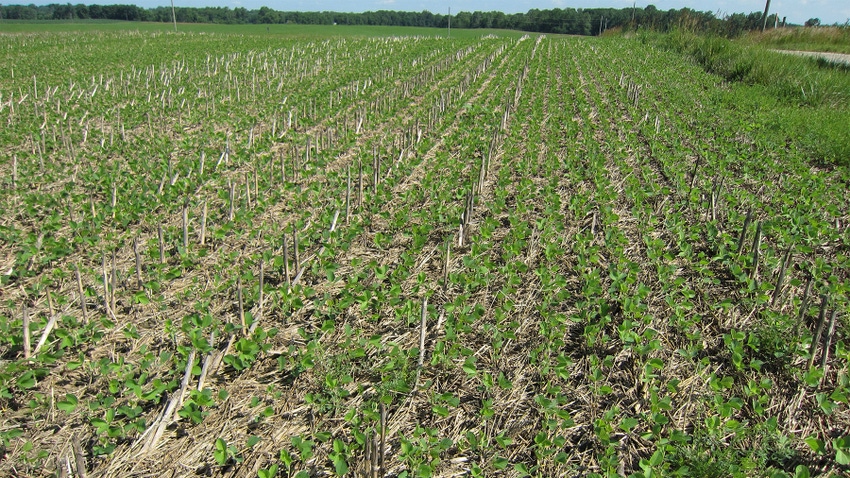November 22, 2023

We didn’t use seed treatment for sudden death syndrome in ’23 but saw it in our fields. Should we treat in ’24 even though it is costly? What are our options? Is there a better option than seed treatment?
The Indiana certified crop advisers panel answering this question includes Andy Like, independent crops consultant, Vincennes; Jeff Nagel, agronomist with Ceres Solutions, Lafayette; and Marty Park, agronomist with Gutwein Seed Services, Rensselaer.
Like: Selecting varieties that are shown to not be as susceptible to sudden death syndrome would be a good strategy if you’re consistently having problems and don’t want to spend money on seed treatment. Unfortunately, once you get SDS, you don’t have rescue treatment options in-season. Seed treatment options help farmers avoid the helplessness of watching their soybean crop be decimated by SDS late in the season.
The seed treatment option is an effective solution. However, it requires spending money upfront before the disease is present. The reality is that you may buy seed treatment that delivers no value in a particular year because SDS pressure is low or nonexistent.
Nagel: Fusarium virguliforme, the fungal pathogen that causes sudden death syndrome, can survive in the soil for several years. Once identified in a field, consider how to manage it for future soybean crops. You may or may not have issues with SDS in any given field, even with a known history. Like all diseases, a combination of the crop’s susceptibility, amount of disease inoculum and growing conditions impacts severity. The best strategy is to implement practices that help mitigate impact of severity and yield loss.
To manage SDS, first try to select varieties with high yield potential that have better SDS tolerance and soybean cyst nematode ratings. You can still have SDS without SCN, but often it is more prevalent with SCN. With rapid introductions of new varieties, seed companies may not always know the level of SDS tolerance.
Second, use Ilevo or Saltro seed treatments if planting soybeans in April or in a field with a history of SDS. Soils are likely to be cooler and wetter. SDS is a root rot, and the primary infection time occurs in the seedling stage. These two fungicides have shown activity on reducing SDS pressure and some activity on SCN. Currently, these are the best treatment options for SDS, and they can provide good return on investment when conditions are favorable for SDS.
SDS is hard to manage. It’s frustrating making diagnostic calls where SDS impacts crops and farmers have done all they can. The best we can do today is use tools available to minimize yield impact and hope the growing season is not conducive for SDS.
Park: Look at the history of SDS in each field. Do you rarely see SDS, or do you see it every year you plant soybeans there? At a minimum, focus on fields with a history of SDS. Variety selection plays a major role in managing this disease. Seed treatment options can be expensive, but SDS can rob your yields. Adding Ilevo or Saltro to your seed treatment will help, but they’re not 100% effective. Other management options include adjusting planting date and reducing soil compaction in problem fields.
You May Also Like




